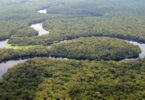Soil isn’t just dirt – it’s the backbone of ecosystems worldwide, crucial for our survival and the wellbeing of the planet. Yet, it faces unprecedented threats. In this guide, we’ll dive deep into the importance of soil, the dangers it faces, and how we can all play a part in its conservation. Let’s embark on this journey together to save Earth’s very skin.
Introduction: Why Soil Matters More Than You Think
You know, soil is kind of a big deal. It’s where our food begins its journey, a crucial puzzle piece in the biodiversity jigsaw, and a frontline warrior against climate change. Without healthy soil, we can kiss goodbye to lush forests, abundant harvests, and even that morning cup of coffee. It’s time we start paying attention to the ground beneath our feet.
Understanding Soil: Beyond Just Dirt
Soil is more than just dirt. It’s a complex mixture of minerals, organic matter, air, and water. This blend hosts a vibrant community of microorganisms, insects, and plant roots, all living in a delicate balance. These tiny residents help purify water, decompose waste, and nourish our food sources. Without them, Earth’s ecosystems would grind to a halt.
The Role of Soil in the Ecosystem: A Keystone for Life
Imagine a world without soil. Scary, right? Soil acts like a giant water filter and storage tank, crucial for clean water and resilience against floods and droughts. It’s also a massive carbon sink, locking away carbon that might otherwise heat up our planet even more. Essentially, soil is the unsung hero in our fight against climate change.
Soil Degradation: A Threat to Food Security and Environmental Health
Sadly, our planet’s skin is in trouble. Soil degradation – the decline in soil quality caused by human activity – is jeopardizing food security and the health of our environment. When soil gets sick, it can’t support the plants, animals, and microorganisms that depend on it, leading to a scary domino effect that threatens the very fabric of life.
The Threats to Our Soil: Unveiling the Invisible Crisis
Erosion: The Silent Enemy of Soil Vitality
Water Erosion: The Scourge of Rainfall
Water erosion is like watching your savings slowly drain away. Heavy rain hits bare soil, and instead of it being absorbed, it washes away the top layer, taking vital nutrients and seeds with it. Imagine the heartbreak of a farmer watching their future fertility literally flow away.
Wind Erosion: The Force of Nature
Then there’s wind erosion, the soil’s equivalent of a bad haircut. When strong winds blow across unprotected soil, they can whisk away the topsoil, leaving behind a surface as lifeless and desolate as the surface of Mars.
The Consequences of Soil Erosion on the Environment and Agriculture
Soil erosion doesn’t just leave the land bare; it also leads to lower crop yields, increased flooding, and water pollution. It’s a lose-lose situation for farmers, wildlife, and us humans.
Chemical Pollution: Poisoning the Planet’s Skin
Pesticides and Their Long-Term Effects
Pesticides might seem like a quick fix, but they’re more like a deal with the devil. They can kill off the helpful organisms in the soil, mess up nutrient cycles, and even
contaminate our water supplies. It’s a toxic legacy that can last for generations.
Industrial Waste and Soil Contamination
Industrial waste is another villain, dumping heavy metals and chemicals into our soil. These pollutants don’t just vanish – they stick around, poisoning plants and animals, seeping into waterways, and entering our food chain.
Salinization: A Man-Made Disaster
Salinization, or the buildup of salt in soil, is like adding way too much salt to your meal. It happens through over-irrigation and poor drainage, leaving the land barren and lifeless. It’s a man-made disaster that’s tough to reverse.
Mismanagement and Overuse: Depleting a Non-Renewable Resource
Unsustainable Farming Practices
Unsustainable farming techniques, like mono-cropping and heavy plowing, can exhaust the soil, stripping away its lifeblood and leaving it gasping for air. It’s a short-sighted approach that sacrifices long-term health for short-term gain.
Deforestation: Clearing Earth’s Green Lungs
Clearing forests for agriculture or urban expansion is like peeling off Earth’s skin. It exposes soil to the harsh elements, reducing its fertility and increasing erosion. Not to mention, it’s a significant blow to biodiversity.
Overgrazing: The Overlooked Culprit
Overgrazing by livestock can turn lush landscapes into desert wastelands. The animals nibble away at the vegetation, and the soil, left naked and ashamed, simply blows or washes away.
The Science and Art of Soil Conservation: Building a Better Future
Conserving soil isn’t just a science; it’s an art that integrates knowledge, creativity, and community effort. Let’s explore how we can protect this precious resource.
The Basics of Soil Conservation
The first step is simple: cover up! Using mulch or growing cover crops can protect soil from erosion, retain moisture, and even fix nitrogen—a win-win-win!
Soil Structure Improvement
Improving soil structure is like building a strong foundation for a house. Adding organic matter can help the soil hold more water and nutrients, making it more resilient and fertile.
Enhancing Soil Fertility: A Natural Approach
Ditching chemicals for organic fertilizers and compost can boost soil health and reduce pollution. It’s like feeding the soil a wholesome, balanced diet.
Water Conservation Techniques: Keeping Soil Hydrated
Innovative irrigation methods, such as drip irrigation and rainwater harvesting, ensure plants get a drink without wasting precious water or washing away soil.
Advanced Soil Conservation Strategies
Agroforestry: Combining Agriculture with Tree Cultivation
Agroforestry, the practice of integrating crops and trees, creates a symbiotic relationship that enhances biodiversity, reduces erosion, and improves crop yields. It’s a win-win for farmers and the environment.
Cover Cropping and Crop Rotation: Nature’s Way of Nurturing Soil
Planting cover crops and rotating crops can naturally replenish soil nutrients, break pest cycles, and prevent erosion. It’s like giving the soil a spa day.
Terrace Farming and Contour Plowing: Fighting Erosion with Ingenuity
Using the landscape’s natural contours to slow water runoff is a genius move. It conserves soil and water while making steep land more usable.
Community and Policy-Driven Solutions
The Role of Government and Policy in Soil Conservation
Strong policies and government support are the backbone of effective soil conservation. By incentivizing sustainable practices and funding research, governments can turn the tide on soil degradation.
Community-Based Approaches: Local Solutions for a Global Problem
Grassroots initiatives, from local composting programs to community gardens, can foster a culture of soil stewardship, proving that small actions can have a big impact.
Education and Awareness: Empowering Future Generations
Teaching kids and adults alike about the importance of soil conservation plants the seeds for a greener, more sustainable future. Knowledge is power, after all.
Case Studies: Soil Conservation in Action
Success Stories From Around the Globe
From the terraced fields of Nepal to the regenerative farms of the Midwest USA, success stories abound. These shining examples show us what’s possible when we commit to protecting our soil.
Restoring Degraded Lands: Lessons from the Loess Plateau
China’s Loess Plateau was once a barren wasteland, but through massive efforts in soil and water conservation, it has been transformed into a lush, productive landscape. It’s a testament to what determination and hard work can achieve.
The Green Revolution in India: A Double-Edged Sword
The Green Revolution brought increased crop yields but at a high environmental cost. It’s a reminder that our approaches to soil conservation must be sustainable, not just effective in the short term.
Agroforestry in Costa Rica: A Win-Win for Biodiversity and Farmers
Costa Rica’s push towards agroforestry is a perfect example of how aligning farming with nature can revive soils, enhance biodiversity, and boost farmer incomes.
Learning from Mistakes: What Went Wrong?
The Dust Bowl: A Historical Lesson in Mismanagement
The Dust Bowl of the 1930s was a dire warning of how poor land management can lead to catastrophe. It’s a history lesson we can’t afford to forget.
Salinization in the Aral Sea Basin: A Modern Cautionary Tale
The Aral Sea Basin’s tragedy, where irrigation practices led to devastating salinization, shows the importance of managing our soil and water resources wisely.
Deforestation in the Amazon: Impacts on Soil and Climate
The ongoing deforestation in the Amazon not only puts species at risk but also the health of the soil itself, with far-reaching impacts on the global climate.
Towards a Sustainable Future: Actions and Innovations in Soil Conservation
Personal Actions: Small Steps Toward Big Changes
Every one of us can help protect soil. Whether it’s choosing sustainable products, reducing waste, or starting a compost bin, small actions can add up to a big difference.
Reducing Chemical Use in Gardening and Landscaping
Opting for organic fertilizers and pest control methods can help reduce chemical runoff and keep our soils alive and kicking.
Supporting Sustainable Agriculture Practices
Choosing products from sustainable sources encourages farmers to adopt practices that protect the soil, creating demand for healthy, environmentally friendly food.
The Importance of Reducing, Reusing, and Recycling Organic Waste
Composting kitchen scraps and yard waste isn’t just good for the soil; it reduces landfill waste, too. It’s a simple step with a double dividend.
Technological Innovations and Future Directions
Precision Agriculture: Smart Farming for Soil Conservation
With precision agriculture, farmers can use data to apply water, fertilizers, and pesticides more efficiently, protecting the soil while boosting yields.
Biochar: A Promising Solution for Soil Enhancement
Biochar, a type of charcoal, can improve soil health, store carbon, and reduce the need for chemical fertilizers. It’s an ancient solution with modern potential.
The Potential of Permaculture: Designing Sustainable Ecosystems
Permaculture isn’t just a farming technique; it’s a philosophy. By designing agricultural systems that mimic natural ecosystems, we can create landscapes that are productive and self-sustaining.
Conclusion: The Road Ahead for Soil Conservation
Recap: The Indispensable Role of Soil Conservation
Soil conservation is more than a necessity; it’s a responsibility we all share. By safeguarding this precious resource, we ensure a healthy planet capable of sustaining life for generations to come.
The Collective Responsibility Towards Preserving Earth’s Skin
Our planet’s health depends on the choices we make every day. From the food we eat to the way we tend our gardens, every action counts. Let’s commit to being stewards of the soil, for our sake and for the Earth’s.
Call to Action: What You Can Do to Make a Difference
Start small, but start today. Plant a tree, start a compost bin, support local farmers, or simply spread the word. Together, we can heal the Earth, one patch of soil at a time.
FAQ: Everything You Need to Know About Soil Conservation
- What is soil conservation and why is it important?
Soil conservation involves practices that protect soil from degradation, ensuring it remains healthy and productive for future use. It’s important because healthy soil underpins agriculture, supports biodiversity, and plays a critical role in regulating the Earth’s climate. - How can individuals contribute to soil conservation efforts?
Individuals can contribute by adopting sustainable practices at home, such as composting organic waste, reducing chemical use, and supporting sustainable farming practices. - What are the long-term benefits of preserving soil health?
Long-term benefits include improved food security, enhanced ecosystem resilience, reduced climate change impacts, and preserved biodiversity. - Can soil conservation efforts combat climate change?
Absolutely. Healthy soils sequester carbon, reducing greenhouse gases in the atmosphere. Conservation efforts also improve soil’s water-holding capacity, increasing resilience to climate change-induced weather patterns.








